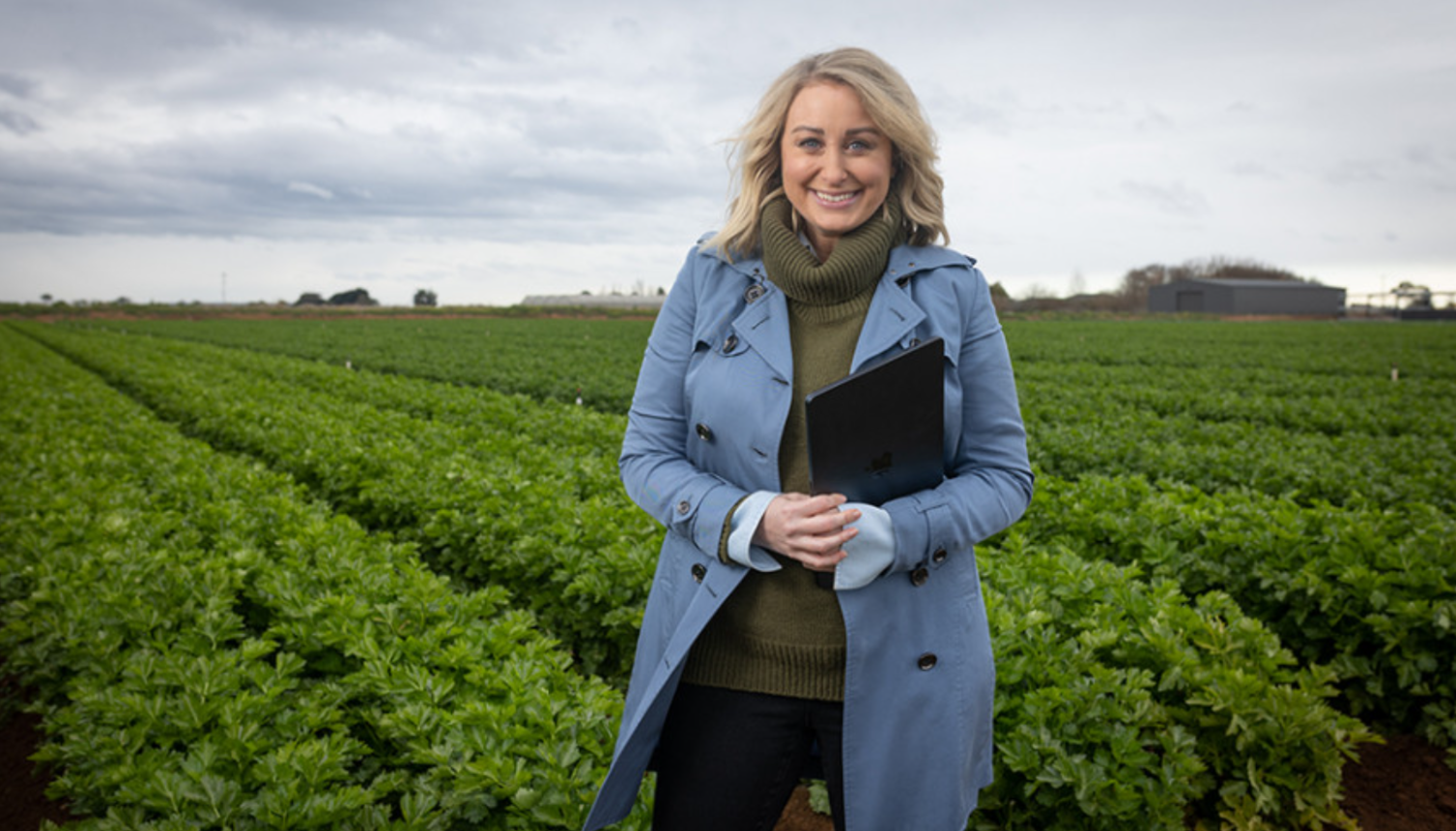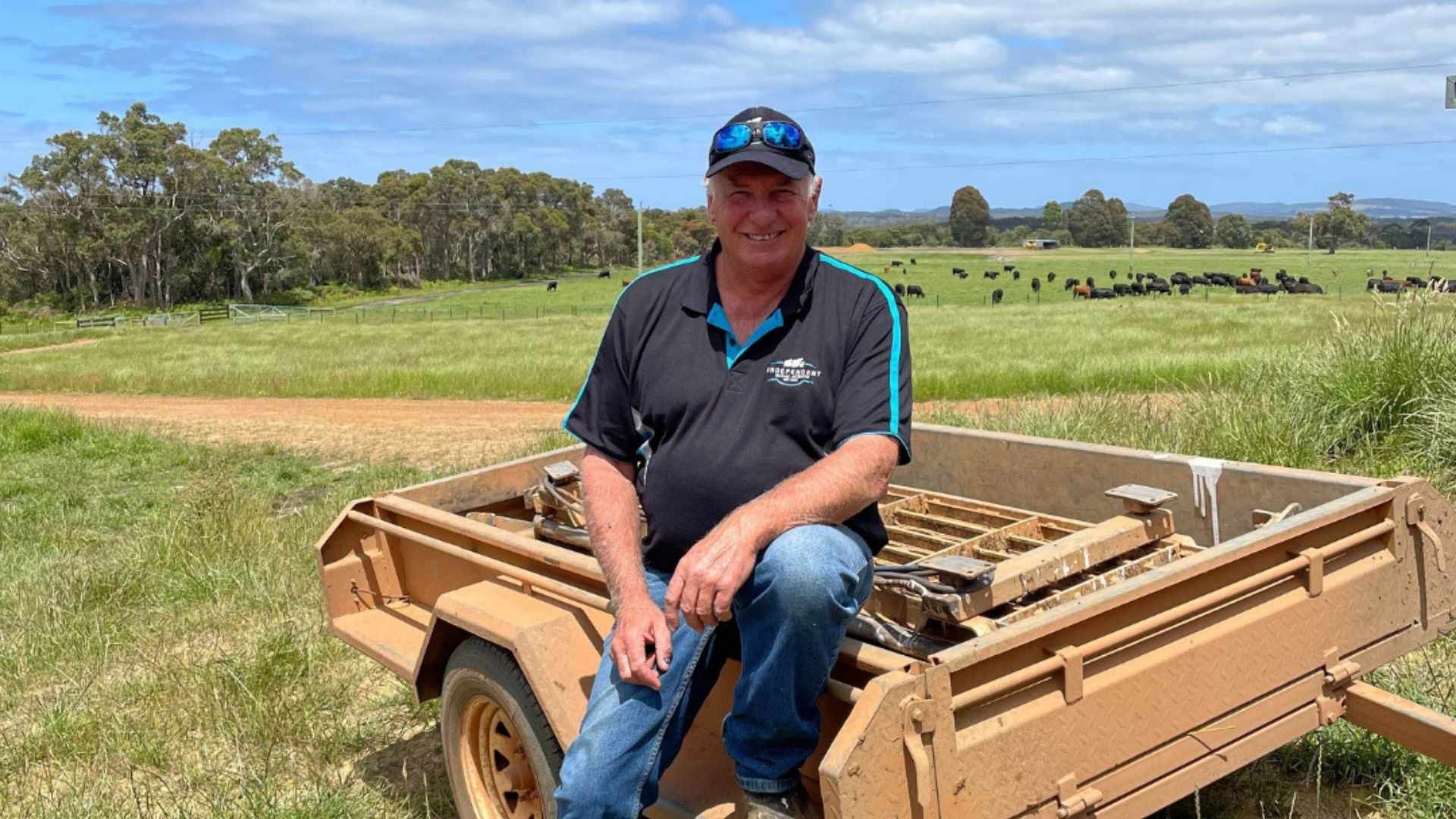LISTEN: How Prepared Families Outperform Everyone Else with Tim Lane of ProAgtive
Most families wait until something breaks to start succession conversations. High-performing families don’t.

Meteorologist Jane Bunn lives and breathes weather so much so that she says it controls her day, like it does for many farmers.
She’s no stranger to Victorian farmers, who first watched Ms Bunn’s expert weather bulletins for WIN regional news in 2008 and have spent the past 10 years keeping up to date with her forecasts for Channel 7 in Melbourne.
The wider farming community has been enjoying Ms Bunn’s weather updates via APlus News in recent times.
Below she shares how she became a “weather nerd”, how language in forecasts is so important, her thoughts on the BOM and why she’s created the Jane’s Weather app to help farmers make informed business decisions.
Ms Bunn grew up in Melbourne and started an IT degree at university, but she quickly worked out it was not her thing. Years later, while snow skiing for the first time, she found great pleasure in trying to work out why it was or wasn’t snowing and how to predict the conditions the following day.
"I really nerded out on all the details about that, and that expanded to, OK, so why is it raining now? Why is there storms? Why is this happening? Why is that happening?” she said.
“I was essentially working odd jobs at the time, having no idea what I wanted to do with my life. I found I was procrastinating from doing my real job by looking at the weather. So then went, OK, this is clearly what I want to do, and let's go and make sure that it can happen.”
At 23 she went back to university and graduated with a Bachelor of Science degree from Monash University, majoring in atmospheric science and mathematics, before undertaking a Graduate Diploma of Meteorology with the Bureau of Meteorology (BOM).
It wasn’t easy. In the summer before she started her studies, she had to up her mathematics skills and also learn physics. “In atmospheric science and mathematics there's a lot of maths. It was difficult, but because I loved what I was doing, I was able to keep going.”
Ms Bunn started her meteorologist career as a forecaster for the BOM in Sydney - it’s a time she reflects on as being frustrating.
"You could spend all day crafting the official forecast using the exact terminology that the bureau has, and the media would change those words and then change the meaning of what it was,” she recalled.
“I would be ringing up radio stations saying, ‘Hey, can you just say this? You're putting wet weather in a dry forecast’.”
She was also enjoying sharing weather updates with the media as part of her role. "Back when I was at the weather bureau a lot of the forecasters were, not to be stereotypical here, but an older gentleman in a brown cardigan,” she said.
“The media would come in and want to ask about severe weather or whatever was happening. None of them would put their hand up, whereas I was like, Yeah, I like talking about the weather. This is fun.”
She eventually worked out that she wanted to "remove the middleman” and went on to study a Graduate Certificate in Journalism at Charles Sturt University.
Ms Bunn became only the second female in Australia to be a meteorologist and weather presenter when she started working for WIN across south eastern Australia.
It was serendipitous that on the day she plucked up the courage to phone the WIN chief of staff to ask about vacancies, on his desk sat survey results in which viewers were asking for more credibility in weather reporting.
She spent five memorable years at WIN and reflected that the lessons learned at the time have stayed with her.
“I'm always really careful about the language I choose because I'm aware that there are people out there that either have way too much rain or they are desperate for rain,” she said.
“There's always something that they're needing out of this weather, and they're looking to me for the guidance to show them if it's a thing that's going to save them.
It was a hard-learned lesson.
“One of my first crosses, I said it had been really, really dry in Gippsland and for years and years, and now there was a big rain system coming, and I said, ‘and in good news for Gippsland, there's some rain on the way’, only to wake up the next morning, and there's houses floating down rivers.”
In 2014, Ms Bunn left WIN News without a real job to go to, with just some fill in work at the ABC lined up. Luckily the head of the news at Channel Seven was watching and that's how she ended up in her current role as Channel 7 Melbourne’s resident weather forecaster and presenter, featuring on the 4pm and 6pm news, as well as special national bulletins and events.
"It was really exciting to be able to bring in a new weather graphical system at Channel 7 and set it up and make it exactly what I as a meteorologist needed to use, rather than inheriting a system that wasn't really suited for the task,” she said.
“That is actually one of the reasons why I started Jane's Weather, because I now have this experience of setting up a new system to solve a problem that I didn't know that I had originally.”
During Covid, Ms Bunn turned a long-standing idea into a reality – a children’s book called Storm.
“My dog also passed away just before that. I think that's how the story sort of formed because it was the story is of little Jane and her dog, Stampy, and Stampy gets scared of thunderstorms one night, and so little Jane, a budding meteorologist, goes and learns everything she can about thunderstorms to keep Stampy safe.”
She’s also starting to think about a second book.
"We've had a couple of little meetings about some ideas about what we can do next,” she said.
Ms Bunn hinted that APlus News readers may be able to help with finding a new topic to cover. If you have a story idea, or weather question, send them through to Ask Jane.
For many years, Jane has often been asked by farmers what weather app she recommended. What she wanted simply didn’t exist, so she decided to build it.
Jane’s Weather – which helps Australian farmers make decisions to take advantage of the weather, with its unique Consensus Forecast and Alerts Service – took a long time to come to fruition, dating back to 2017.
"It's about taking that raw data and then bringing it in and adding value to it so that you can get a really good response,” Ms Bunn, who is the Founder and CEO of Jane’s Weather, said.
“We've now grown to a team of about 11 or 12 people that work on bringing that data, refining it and presenting in the best way.
“It's taken a lot of literally, blood, sweat and tears that we have poured into this. It’s been bootstrapped by myself and a loan from my mother to make this actually get up off the ground.
“It's really nice to now be seeing government organisations and, R&D organisations actually recognise what we're doing, and want to encourage us to do more of that, and believing in us, and giving us grant money to make that happen.
"We 're looking for a bit more investment to be able to scale this up in a much faster way.”
Co-designing the app with farmers means it has already got a great range of features available so that you can make decisions around things like frost, spray window, evapotranspiration, irrigation, growing and degree days for growth.
She can’t see an end to building more features into the app, with farmers continuing to communicate new needs and the team working to solve them.
Ms Bunn said the BOM had to look after everyone, and was unable to complete targeted forecasting, which can frustrate farmers – which had been evident in recent months.
“We use their data, but we've come up with new and better tech methods to process it a lot faster and to also adapt it for where you're actually located, not 200km away at a bureau station. It's what's happening on your property,” she said.
“The important bit there is it's based on good data, but it's also designed to help you make decisions, and the Bureau's not in a place to be able to do that, because they've got to look after everybody.
“We just really want to look after farmers and make sure that we're getting you data you can actually use.”
.png)
Most families wait until something breaks to start succession conversations. High-performing families don’t.

More than three decades ago, Col Thexton became the first Western Australian livestock agent to list cattle online through AuctionsPlus, then known...

As the year draws to a close, AuctionsPlus has recorded several standout results across a range of commodities through its interfaced sales. From...